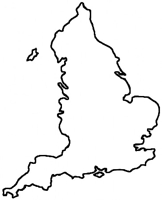
|
The Society of Folk Dance Historians (SFDH)
English Country Dance
[
Home |
About |
Encyclopedia | CLICK AN IMAGE TO ENLARGE |

|
How heys (and by implication other "English" moves) got into contra dancing.
 Propped up beside my computer on this cold and rainy Saturday morning are the Pinewoods Camp "Dance Weeks" brochures for 1969 and 1973. They have jogged my memory about an important period in the evolution of the American/English country dance and New England contra dancing.
Propped up beside my computer on this cold and rainy Saturday morning are the Pinewoods Camp "Dance Weeks" brochures for 1969 and 1973. They have jogged my memory about an important period in the evolution of the American/English country dance and New England contra dancing.
The dance weeks in those days resembled what American/English Week is now, and they were a significant venue for cross fertilization between English and American dance (this was before Ashokan, Mendocino, and many other similar programs). On the 1969 dance staff doing English were: Art and Helene Cornelius, Renald "Cajy" Cajolet, Peter Leibert, Bob Guillard, Bob Hider, Mary Owen, Genny Shimer, and May Gadd. American Squares and Contras were led by Ted Sannella ("expert and lively caller of eastern Squares and Contras – traditional and contemporary"). Music was by Phil Merrill and John Davison pianos, Marshall Barron violin, me on oboe, and the inimitable Marguerite and Otto Wood on piano and violin.
I believe this was Ted's first year at Pinewoods Dance Week (previous year featured Dick Forscher and Ralph Sweet), though he had been exposed to English dance prior to this at Boston Centre events. Indeed, he wrote his first triplet (called at that time "Ted's Three-Couple Set #1") in June of 1968. He often explained that his inspiration for the Triplets (as they were later called) was "Fandango." The main feature he liked was that a couple didn't have to wait more than two turns to be "active." So, at that point, it wasn't the figures so much. At the Pinewoods week, Ted soaked up a lot more English, both dances and music, and had several new Triplets for us all to try.
The Dance Weeks of 1973 stand out in my memory. Joining the English dance staff was Bob Parker, from England. Jim Morrison did Southern Mountain Square dances (aka "running sets") both weeks, and Dudley Laufman led the contra dancing for the second week. Ted Sannella had become a fixture and was back for the first week. What a mix! Joining the musicians were Tom Kruskal on accordion/concertina and Larry Delorier on flute (a veritable James Galway – impeccable classical technique, incredible ear, and a wild and crazy guy. In my opinion, the forerunner of the "Wild Asparagus" school of contra dance music).
At that time, Dudley was at the head of the fast-growing revival of New England Contra dancing among young people. It was the hot thing. He led "Dudley dances" all over New England, branching out from the traditional Nelson, New Hampshire town dance he "inherited" (the famous, beloved Bob McQuillen was the piano player there, with Alan Block (of Greenwich Village sandal shop fame, father of Rory Block) on fiddle, Newt Tolman on flute, Dave Fuller on accordion, among others). The Contra dancing Dudley-style was slow, with lots of clogging and a very grounded, earthy style. A high point for us dancers, imagine, was the 1st couple down the center and back – the 1's doing incredible variations on clog steps as they moved down and turned to head back – the inactive 2's relishing the opportunity to do solo clog routines on the sides (probably a major reason C# pavilion had to be re-built). Meanwhile, the English dancing remained quick and light (Sharp style), though Bob Parker was pushing vigorous traditional dances, bringing their energy and figures into the Pinewoods mainstream, encouraged by Jim Morrison. Ted Sannella did his repertory of newly composed Contras and triplets, Otto and Marguerite did their repertory of leisurely traditional singing squares ("Blue Ridge Mountains of Virginia," "Because . . .") and every afternoon we exhausted ourselves doing Southern Mountain running sets and big sets. It was quite a stew. After that summer, Dudley began calling Prince William and Childgrove, among others, at the Dudley dances. Ted was writing more and more contras and triplets with English figures (including heys). Soon the contra tradition, via Ted and Dudley and others, would embrace the figures, flow, and faster tempos of the English and Southern Mountain dances, culminating in the "zesty Contra" style.
As for the English dancing, well . . . Pat Shaw arrived in 1974, and everything changed . . .
–Gene Murrow, EC Dancer, Musician, and totally unprofessional historian.
DOCUMENTS
- Country Dance, a dance family.
- England, a country.
- English Country Dancing, an article.
- English Steps, Terms, and Styling, an article.
- Playford Dances, an article.
This page © 2018 by Ron Houston.
Please do not copy any part of this page without including this copyright notice.
Please do not copy small portions out of context.
Please do not copy large portions without permission from Ron Houston.